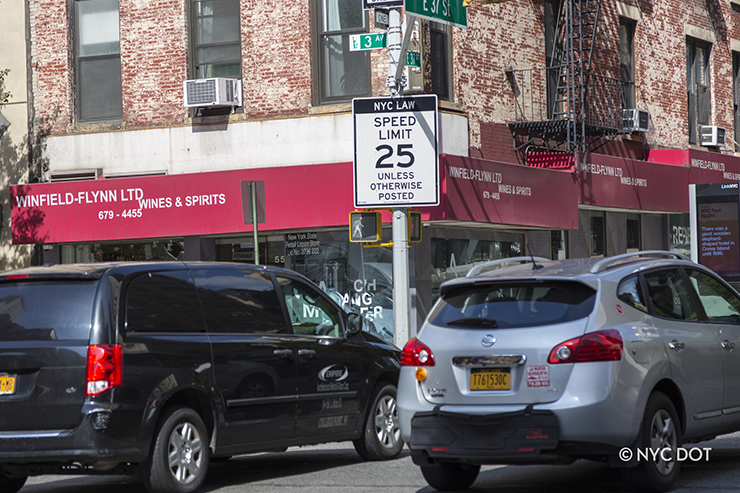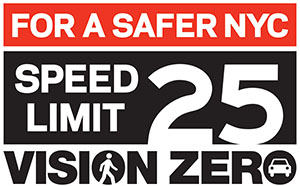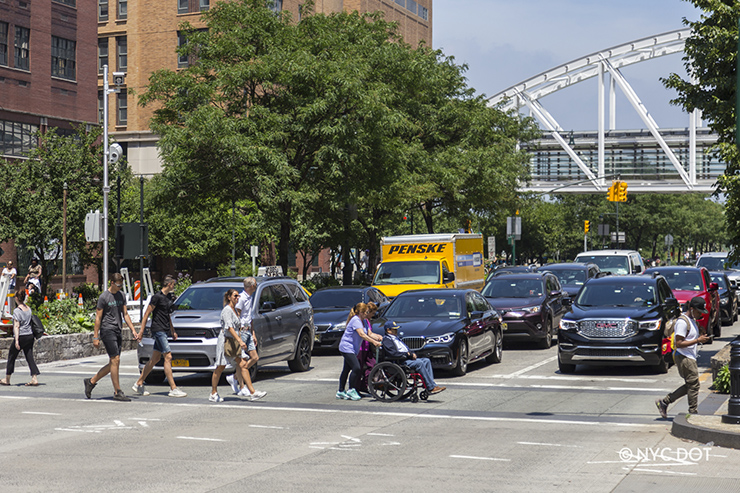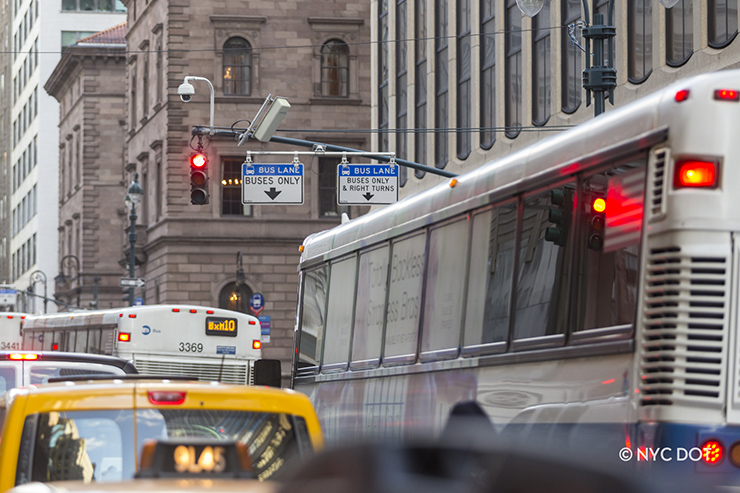Vision Zero: Safe Driving
Overview
In the City of New York, we recognize that deaths and serious injuries in traffic are not inevitable "accidents," but preventable crashes that can be ended through engineering, enforcement, and education. No level of fatality on city streets is inevitable or acceptable.
Vision Zero is NYC’s citywide initiative to eliminate death and serious injuries from traffic incidents.
Vision Zero is woven into the operations of all agencies on the Vision Zero Task Force: Business Integrity Commission, City Hall, Department for the Aging, Department of Citywide Administration Services, Department of Health & Mental Hygiene, NYC DOT, District Attorney's Offices, Law Department, Mayor's Office Community Affairs Unit, Mayor's Office of Data Analytics, Mayor's Office of Operations, MTA, Office of Management & Budget, Police Department, Sheriff's Office, and Taxi & Limousine Commission.
New York City Speed Limit


As part of Mayor de Blasio’s Vision Zero initiative, NYC DOT was proud to champion the successful effort to lower New York City’s default speed limit from 30 MPH to 25 MPH.
Thirty miles per hour was and is an inappropriate speed limit for most residential streets. With the leadership and support of the state legislature, the governor and the City Council, the 2014 legislative change was followed by the safest year on New York City streets.
NYC DOT now provides current posted speed limits as a layer in Open Data and for public viewing on the Vision Zero View website.
NYC DOT is always open to public feedback and considers public input on posted speed limits.
Download Maps on Posted Speed Limits in NYC Open Data Vision Zero View Download 25 MPH FAQ’s (pdf)
Automated Enforcement Overview
New York City has an extensive network of cameras for enforcing speed and red light violations throughout the City. Speeding and running red lights are common causes of serious crashes, and automated enforcement technology has proven itself effective, efficient, and fair.
When a driver commits a violation, the vehicle’s license plate is photographed, and a Notice of Liability is sent to the vehicle’s registered owner.
Not only have these cameras significantly lowered the incidence of speeding and red light running, but they have also acted as a deterrent – most drivers do not receive more than one or two of these violations.
New York City has the largest automated enforcement program in the United States, and one of the largest in the world.
Pay or dispute a camera violation with the NYC Department of Finance
Speed Camera Program

New York City’s speed camera program issues violations to deter drivers from exceeding the speed limit by more than ten miles per hour, which helps prevents serious crashes from occurring.
Speed cameras are on 24/7.
NYC DOT launched the Speed Camera program in 2013. In June 2014, the pilot expanded to 140 school speed zones, in order to support the pursuit of the City’s Vision Zero goal of eliminating traffic deaths and serious injuries. NYC DOT is now authorized by the State to operate speed cameras in 750 school speed zones 24 hours a day, seven days a week, year-round. The State may also deploy mobile speed cameras in select highway and parkway work zones.
New York City’s Speed Camera Enforcement FAQ (pdf) Speed Cameras & Vision Zero: The Case for Speed Cameras 24/7 (pdf)
Speed Camera Program Report
Over the last ten years, daily violations at locations with speed cameras have declined 94%. In the summer of 2022, in response to an increase in speeding and fatalities brought on by the COVID-19 pandemic, particularly in the overnight hours, New York State granted authorization for speed camera violations to be issued in the overnight and weekend hours at all camera locations. New locations where cameras were installed in 2022 saw 14% fewer injuries and fatalities than locations without cameras. This report was prepared to comply with State law, which granted the City the authority to operate a Speed Camera program.
NYC DOT's Speed Camera Program Report
Red Light Camera Program

The purpose of the Red Light Camera Program is to encourage all motorists to obey traffic signals. A vehicle photographed entering an intersection after a traffic signal turns red will be issued a fine payable by the vehicle’s registered owner.
New York City launched the nation's first program in 1994. Since then, over 500 American municipalities have established similar programs, preventing red light running related crashes, injuries and deaths across the country.
Red Light Camera Program Report
This report provides evidence that red light cameras are effective at reducing red light running. Since 1994, the average daily number of violations has gone down 73% at intersections where they are installed. More importantly, intersections with red light cameras have seen a 65% reduction in deadly T-bone crashes compared to the years right before the program began. The tremendous success of the program has made NYC streets safer for everyone. However, state law restricts these cameras to only 150 intersections or about 1% of all intersections with traffic signals. As a result, they cannot be used to deter widespread red light running. This year we are asking the New York State Legislature to authorize an expansion of this program to allow us to place cameras at 10% of our intersections with traffic signals to further curb the recent rise of dangerous driving.
NYC DOT's Red Light Camera Program Report
Bus Lane Camera Program

New York State authorized NYC to place cameras along bus lanes and on buses to catch violators on selected corridors.
Signs are posted along corridors where bus lane cameras are in use to warn drivers to keep out of bus lanes, except for allowed right turns and passenger pick-ups or drop offs.
Bus Lane Camera Program Report
This report provides a basic overview of the program’s implementation and discusses violation results. It was prepared to comply with State law, which granted the City the authority to operate camera-based bus lane enforcement.
NYC DOT’s Bus Lane Camera Program Report
Resources
Vision Zero NYC DOT & NYPD
This report contains summary data describing the annual core outputs (street design, enforcement and safety education) and core outcomes (traffic fatalities) relevant to Vision Zero, Mayor de Blasio’s initiative to reduce traffic fatalities and severe injuries to zero.
Download the Vision Zero 2018 NYC DOT and NYPD Accomplishments (March 2019 pdf) Download the Vision Zero 2017 NYC DOT and NYPD Accomplishments (January 2018 pdf) Download the Vision Zero 2016 NYC DOT and NYPD Accomplishments (February 2017 pdf)
Street Improvement Projects
As a key part of Vision Zero, NYC DOT has transformed New York City streets using a broad toolkit of interventions. Street Improvement Projects (SIPs) bring design improvements to over 100 locations annually.
